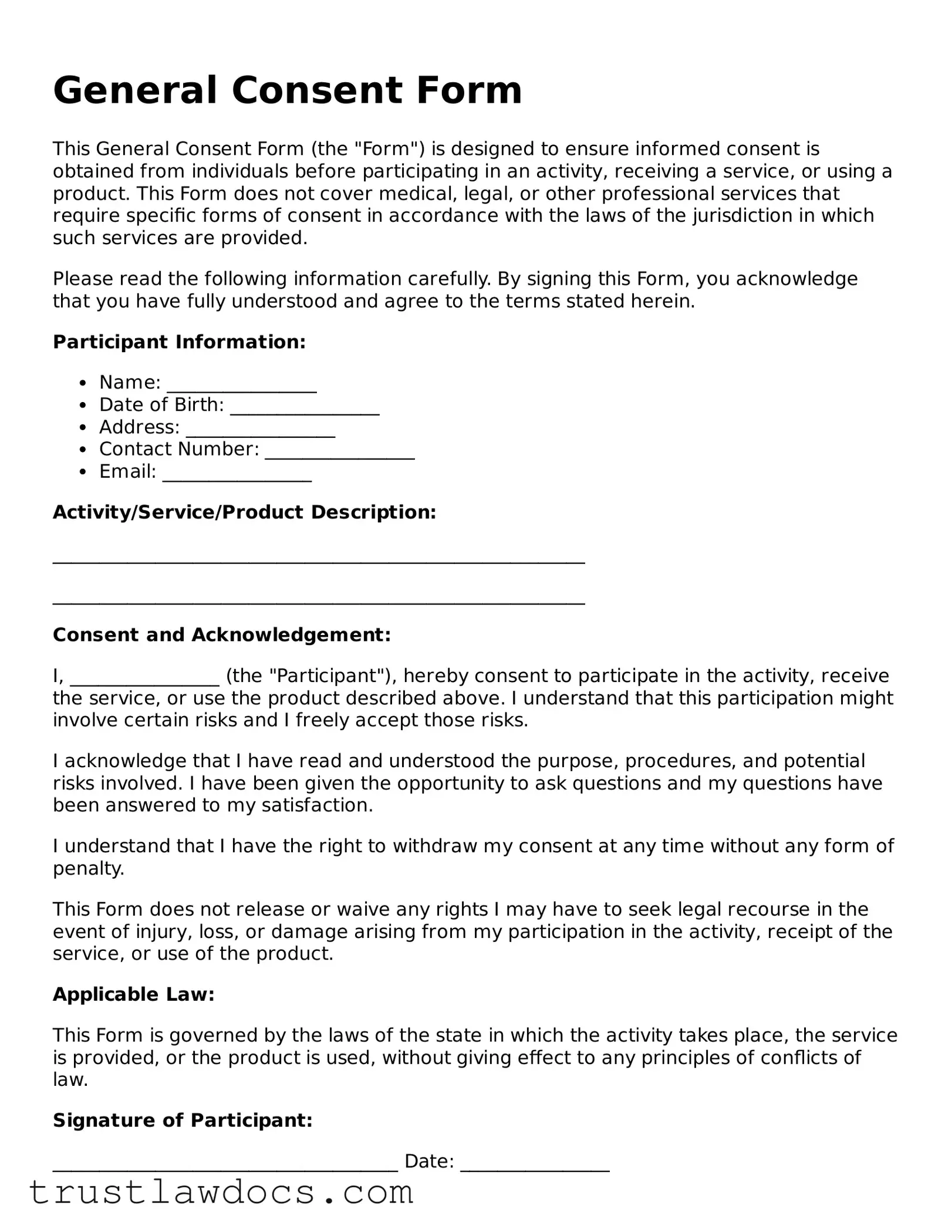General Consent Form
This General Consent Form (the "Form") is designed to ensure informed consent is obtained from individuals before participating in an activity, receiving a service, or using a product. This Form does not cover medical, legal, or other professional services that require specific forms of consent in accordance with the laws of the jurisdiction in which such services are provided.
Please read the following information carefully. By signing this Form, you acknowledge that you have fully understood and agree to the terms stated herein.
Participant Information:
- Name: ________________
- Date of Birth: ________________
- Address: ________________
- Contact Number: ________________
- Email: ________________
Activity/Service/Product Description:
_________________________________________________________
_________________________________________________________
Consent and Acknowledgement:
I, ________________ (the "Participant"), hereby consent to participate in the activity, receive the service, or use the product described above. I understand that this participation might involve certain risks and I freely accept those risks.
I acknowledge that I have read and understood the purpose, procedures, and potential risks involved. I have been given the opportunity to ask questions and my questions have been answered to my satisfaction.
I understand that I have the right to withdraw my consent at any time without any form of penalty.
This Form does not release or waive any rights I may have to seek legal recourse in the event of injury, loss, or damage arising from my participation in the activity, receipt of the service, or use of the product.
Applicable Law:
This Form is governed by the laws of the state in which the activity takes place, the service is provided, or the product is used, without giving effect to any principles of conflicts of law.
Signature of Participant:
_____________________________________ Date: ________________
Signature of Parent/Guardian (if Participant is under 18 years):
_____________________________________ Date: ________________
This Form is provided as a general template and may need to be modified to comply with the laws of the specific state or jurisdiction where it is used. Users of this Form are advised to consult with a legal professional to ensure compliance with applicable laws.
